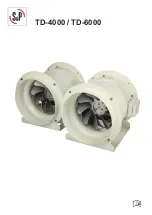
A
LARMS
5-8
www.zoll.com
906-0731-01-05 Rev. C
High Priority Alarms
Service
Code
Alarm Name/Mitigation/Resolution
1001
Self Check Failure
Alarm triggers when the compressor fails to operate or fails to provide the flow required to deliver a breath
and high pressure O
2
is not available to provide ventilation.
Mitigation/Info: Pneumatic System: Compressor
,
Manually Ventilate Patient, Connect 55
psig/380 kPa O2
,
Restart Ventilator with O2, **Contact Service Center**
1002
Self Check Failure
Alarm triggers when communication between the compressor controller and Smart Pneumatic Module (SPM)
is lost and high pressure O
2
is not available to provide ventilation.
Mitigation/Info: Pneumatic System: Compressor, Manually Ventilate Patient
,
Connect 55
1003
Self Check Failure
Alarm triggers when the flow from the first breath is
±
20% of the expected flow for the tidal volume at start
up
.
This unusually low RPM is a symptom of a dirty flow screen which cannot be serviced by the user
.
Mitigation/Info: Pneumatic Sensor: Pneumotach, Manually Ventilate Patient
,
**Contact Service Center**
1010
Self Check Failure
Alarm triggers when the O
2
valve fails in the open position which results in continuous inspiratory flow. When
this occurs the device automatically opens the exhalation valve to prevent pressure from accumulating in the
circuit and ventilation stops.
Mitigation/Info: Pneumatic System: O2 Valve, Manually Ventilate Patient
,
**Contact Service Center**
1011
Self Check Failure
Alarm occurs when the signal to the O
2
valve is not delivering the required flow rate and the compressor is
not available to provide ventilation.
Mitigation/Info: Pneumatic System: O2 Valve, Manually Ventilate Patient, **Contact Service Center**
1012
Self Check Failure
Alarm occurs when the communication between the O
2
valve and the SPM fails and the compressor is not
available to provide ventilation.
Mitigation/Info: Pneumatic System: O2 Valve, Manually Ventilate Patient
,
**Contact Service Center**
1020
Low O2 Supply Failure
Alarm occurs when the O
2
supply pressure is <35 psig (241 kPa) and the compressor is not available to sup-
port ventilation. If the O
2
source can be restored the device should be cycled off then on to reset. By design
the device will not reestablish O
2
operation unless the supply pressure is
≥
40 psig (276 kPa). If the supply
pressure is between 40 and 87 psig (276 to 600 kPa) the user should check the hose connections for leaks.
Occasionally, this alarm can be caused by a regulator that provides a static pressure within range but is not
able to provide the flow necessary to meet the patient flow demand.
Mitigation/Info: Manually Ventilate Patient
,
Connect 55 psig/380 kPa O2, Restart
,
Check O2 Supply for
















































